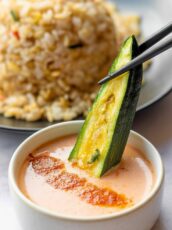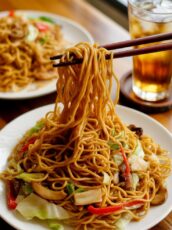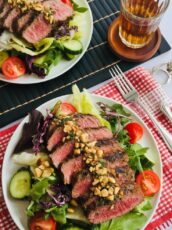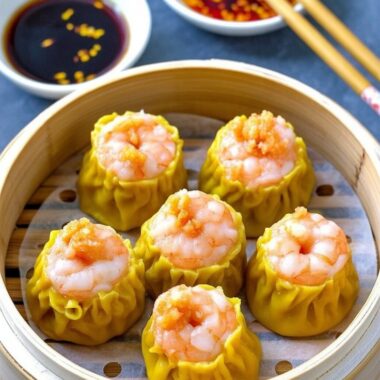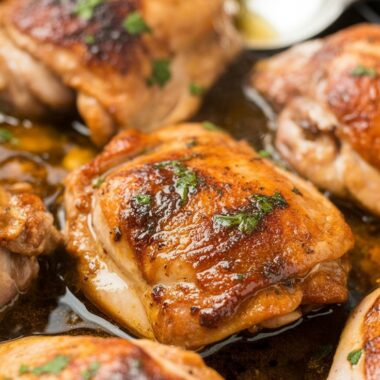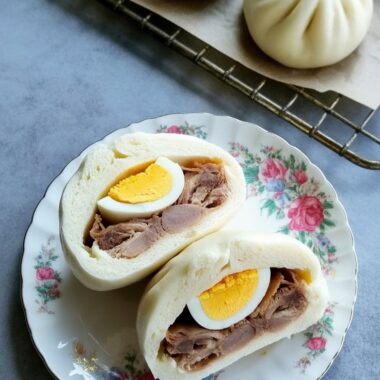This Thai Curry Recipe is a vibrant and aromatic dish that brings the essence of Thai cuisine to your kitchen. With its creamy coconut milk, fragrant spices, and a medley of fresh vegetables or proteins, this curry is not only delicious but also customizable to suit your taste. The balance of sweet, salty, and spicy flavors makes it a comforting meal that is perfect for any occasion.
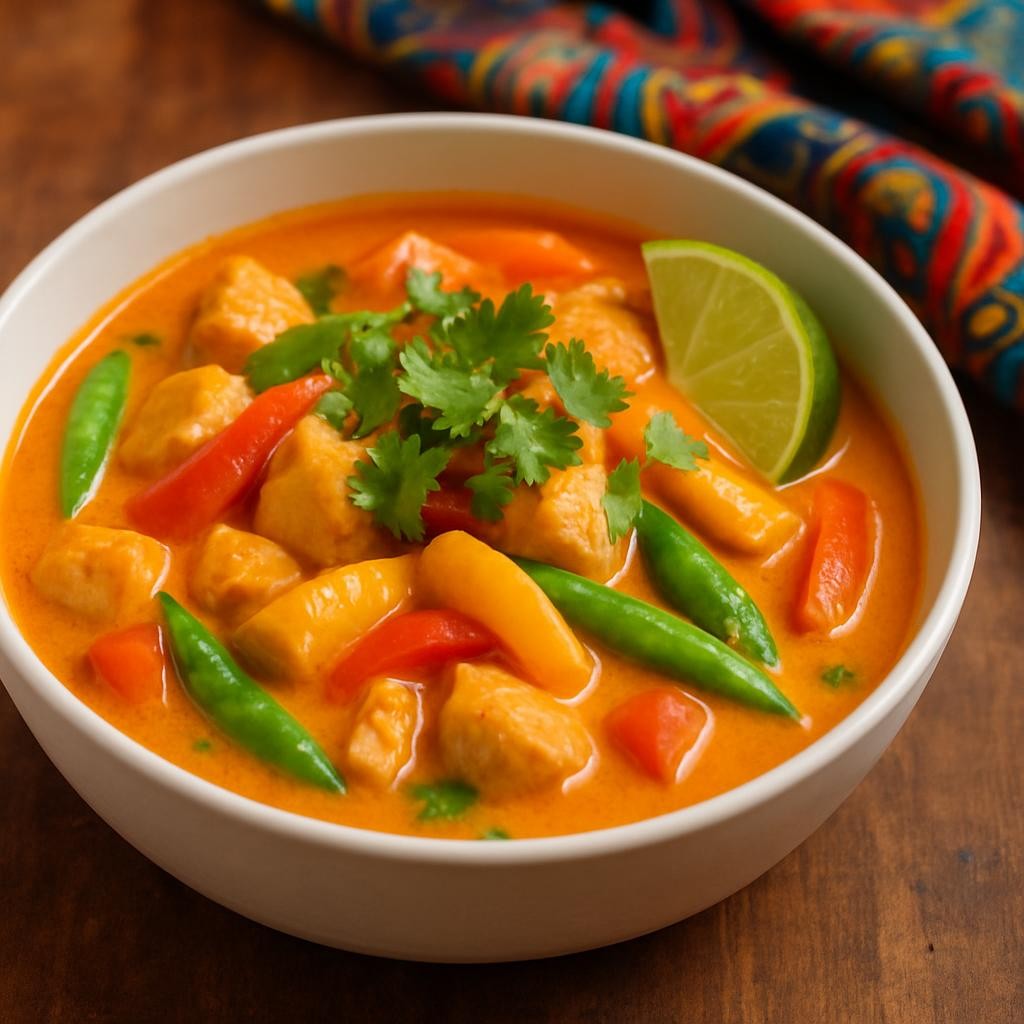
Why You Will Love This Recipe
You will absolutely love this Thai Curry Recipe for its incredible flavor profile and simplicity. The use of fresh herbs and spices creates a depth of flavor that is both satisfying and refreshing. It fits well into a healthy lifestyle, as you can easily incorporate plenty of vegetables and lean proteins. Plus, it’s a one-pot dish, making clean-up a breeze! Whether you’re a busy professional or a home cook looking to impress, this recipe is straightforward and quick, allowing you to whip up a gourmet meal in no time.
Tips and Tricks
- Prep Ingredients Ahead: Chop your vegetables and measure out spices before starting to save time during cooking.
- Use Fresh Herbs: Fresh basil and cilantro can elevate the flavor of your curry. Adding them at the end of cooking preserves their vibrant taste.
- Customize the Heat: Adjust the amount of curry paste based on your spice tolerance. Start with less and add more if needed.
- Coconut Milk: Use full-fat coconut milk for a creamier texture. If you’re looking for a lighter option, low-fat coconut milk works too, but may not be as rich.
Make Ahead Tips
You can make this Thai curry ahead of time by preparing the curry base (coconut milk, curry paste, and aromatics) and storing it in the refrigerator for up to three days. Cook your protein and vegetables fresh to maintain their texture. If you want to make the entire dish ahead, it will keep well in the fridge for about four days.
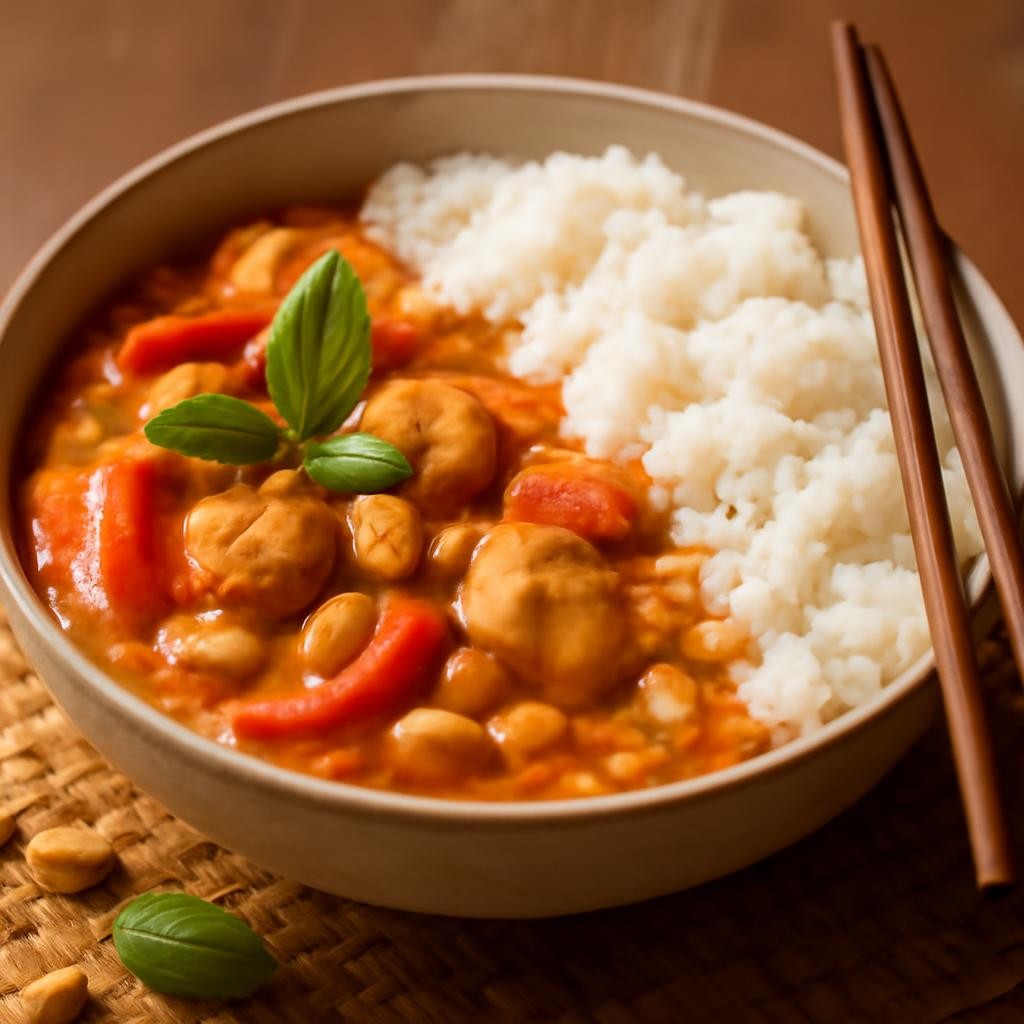
Recipe Variations
- Protein Options: Swap chicken for shrimp, tofu, or chickpeas for a vegetarian version.
- Vegetable Medley: Use seasonal vegetables like zucchini, carrots, or eggplant for a different twist.
- Curry Type: Try red, green, or yellow curry pastes depending on your preferred spice level and flavor profile.
How to Serve
Serve your Thai curry over a bed of fluffy jasmine rice or alongside rice noodles. Garnish with fresh cilantro, lime wedges, and a sprinkle of chopped peanuts for added crunch. A drizzle of chili oil can also enhance the dish’s appearance and flavor.
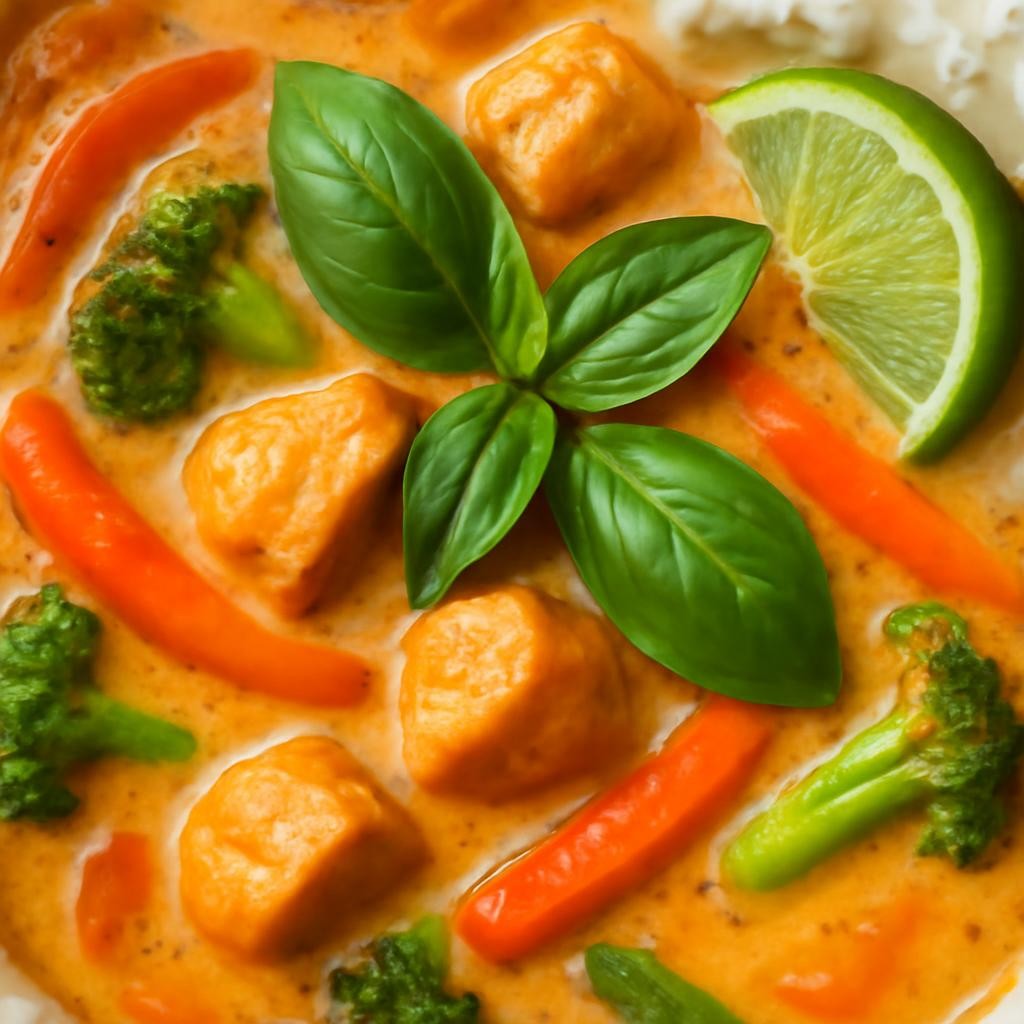
Pairing Suggestions
To complement your Thai curry, consider pairing it with a crisp Riesling or a light lager. For non-alcoholic options, ginger tea or Thai iced tea can provide a refreshing balance. For sides, serve with spring rolls or a simple cucumber salad to add a refreshing crunch to your meal.
How to Store
Store any leftover Thai curry in an airtight container in the refrigerator for up to four days. For longer storage, freeze portions in freezer-safe containers for up to three months. When reheating, do so gently over low heat on the stove or in the microwave until warmed through.
Equipment Needed
You will need a large pot or Dutch oven for cooking the curry. A sharp knife and cutting board will make chopping vegetables easier. If you prefer, an immersion blender can be handy for pureeing any chunky vegetables into the sauce for a smoother texture.
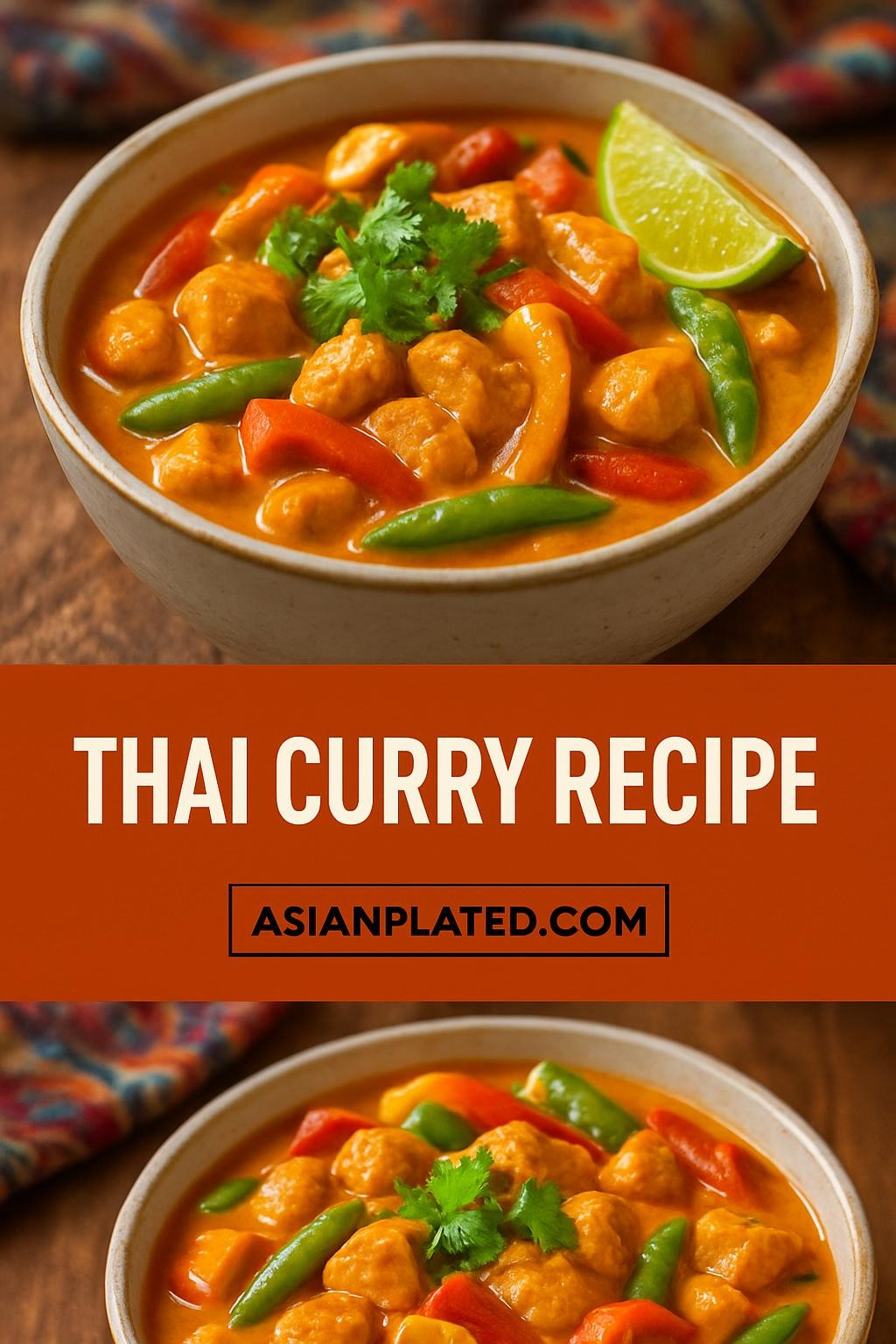
Dietary Adaptations
For a vegan Thai curry, simply replace chicken with tofu or tempeh and ensure the curry paste is vegan-friendly. To make it gluten-free, double-check that your curry paste and sauces are gluten-free. If you’re nut-free, avoid any garnishes like peanuts and consider using sunflower seeds instead.
Seasonal Adaptations
In the summer, use fresh vegetables like zucchini and bell peppers. In the fall or winter, root vegetables such as sweet potatoes and carrots can add heartiness to the dish. You can also use canned pumpkin for a unique twist on the traditional curry.
Recipe FAQs
- Can I use store-bought curry paste? Yes, high-quality store-bought curry paste works well and saves time.
- How long does it take to cook? The total cooking time is around 30 minutes, including prep and cooking time.
- What can I substitute for coconut milk? If you need a lighter option, try almond or oat milk, but keep in mind this will alter the flavor and creaminess.
Thai Curry

This Thai Curry Recipe is a vibrant and aromatic dish that brings the essence of Thai cuisine to your kitchen.
Ingredients
- 1 tablespoon vegetable oil
- 1 onion, diced
- 3 cloves garlic, minced
- 1 tablespoon fresh ginger, minced
- 2-3 tablespoons Thai red curry paste
- 1 can (14 oz) coconut milk
- 2 cups vegetable broth or chicken broth
- 2 cups mixed vegetables (bell peppers, snap peas, carrots)
- 1 pound protein of choice (chicken, shrimp, tofu)
- 2 tablespoons fish sauce (or soy sauce for a vegan option)
- 1 tablespoon brown sugar
- Juice of 1 lime
- Fresh basil and cilantro for garnish
- Cooked jasmine rice or rice noodles for serving
Instructions
- In a large pot, heat the vegetable oil over medium heat. Add the diced onion and sauté until translucent, about 5 minutes.
- Stir in the minced garlic and ginger, cooking for an additional minute until fragrant.
- Add the Thai red curry paste, stirring to combine and cooking for another minute.
- Pour in the coconut milk and broth, stirring until the curry paste is fully dissolved.
- Add your protein of choice and bring the mixture to a gentle simmer. Cook until the protein is cooked through (about 10 minutes for chicken, 5 minutes for shrimp).
- Stir in the mixed vegetables, fish sauce, and brown sugar. Simmer for an additional 5-7 minutes until the vegetables are tender.
- Adjust seasoning with lime juice, adding salt or more fish sauce as needed.
Serve over jasmine rice or rice noodles, garnished with fresh herbs.
Nutrition Information:
Yield: 4 Serving Size: 1Amount Per Serving: Calories: 636Total Fat: 7gSaturated Fat: 2gTrans Fat: 0gUnsaturated Fat: 4gCholesterol: 24mgSodium: 1773mgCarbohydrates: 48gFiber: 7gSugar: 10gProtein: 96g
Asianplated.com, occasionally offers nutritional information for recipes contained on this site. This information is provided as a courtesy and is an estimate only. This information comes from online calculators. Although allchickenrecipes.com attempts to provide accurate nutritional information, these figures are only estimates.
Final Thoughts
Making your own Thai curry at home is a rewarding experience that fills your kitchen with delicious aromas and your palate with delightful flavors. This recipe is versatile and can be adjusted to suit any dietary needs or seasonal ingredients. With just a few simple steps, you can create a dish that is sure to impress family and friends. So, roll up your sleeves and get ready to enjoy a homemade Thai curry that’s bursting with flavor!



